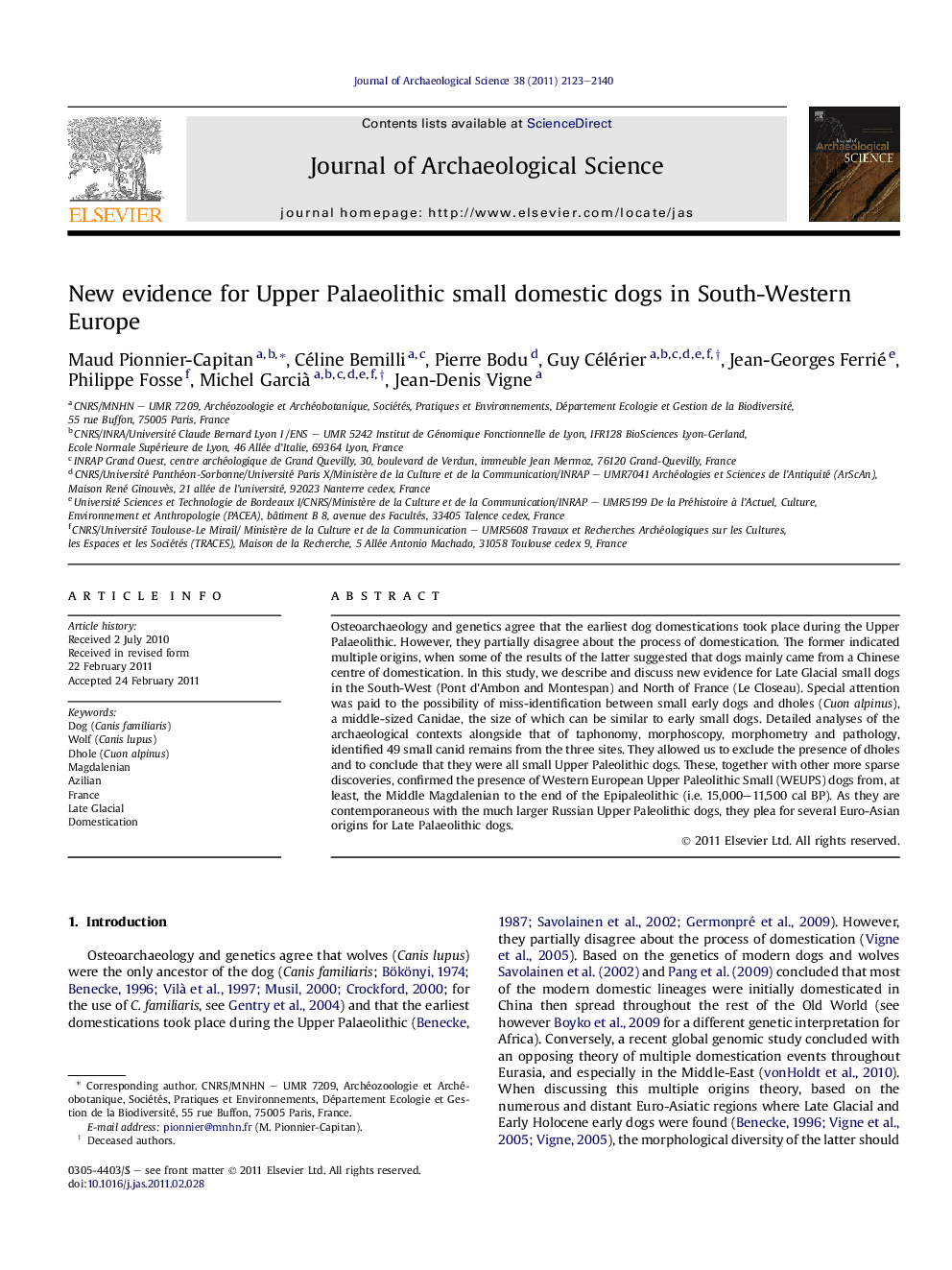| Article ID | Journal | Published Year | Pages | File Type |
|---|---|---|---|---|
| 1036318 | Journal of Archaeological Science | 2011 | 18 Pages |
Osteoarchaeology and genetics agree that the earliest dog domestications took place during the Upper Palaeolithic. However, they partially disagree about the process of domestication. The former indicated multiple origins, when some of the results of the latter suggested that dogs mainly came from a Chinese centre of domestication. In this study, we describe and discuss new evidence for Late Glacial small dogs in the South-West (Pont d’Ambon and Montespan) and North of France (Le Closeau). Special attention was paid to the possibility of miss-identification between small early dogs and dholes (Cuon alpinus), a middle-sized Canidae, the size of which can be similar to early small dogs. Detailed analyses of the archaeological contexts alongside that of taphonomy, morphoscopy, morphometry and pathology, identified 49 small canid remains from the three sites. They allowed us to exclude the presence of dholes and to conclude that they were all small Upper Paleolithic dogs. These, together with other more sparse discoveries, confirmed the presence of Western European Upper Paleolithic Small (WEUPS) dogs from, at least, the Middle Magdalenian to the end of the Epipaleolithic (i.e. 15,000–11,500 cal BP). As they are contemporaneous with the much larger Russian Upper Paleolithic dogs, they plea for several Euro-Asian origins for Late Palaeolithic dogs.
► Small dogs from three French archaeological sites from the end of the Paleolithic. ► Risks of miss-identification between small early dogs and dholes. ► Underline the morphologic diversity among Paleolithic dogs’ populations.
